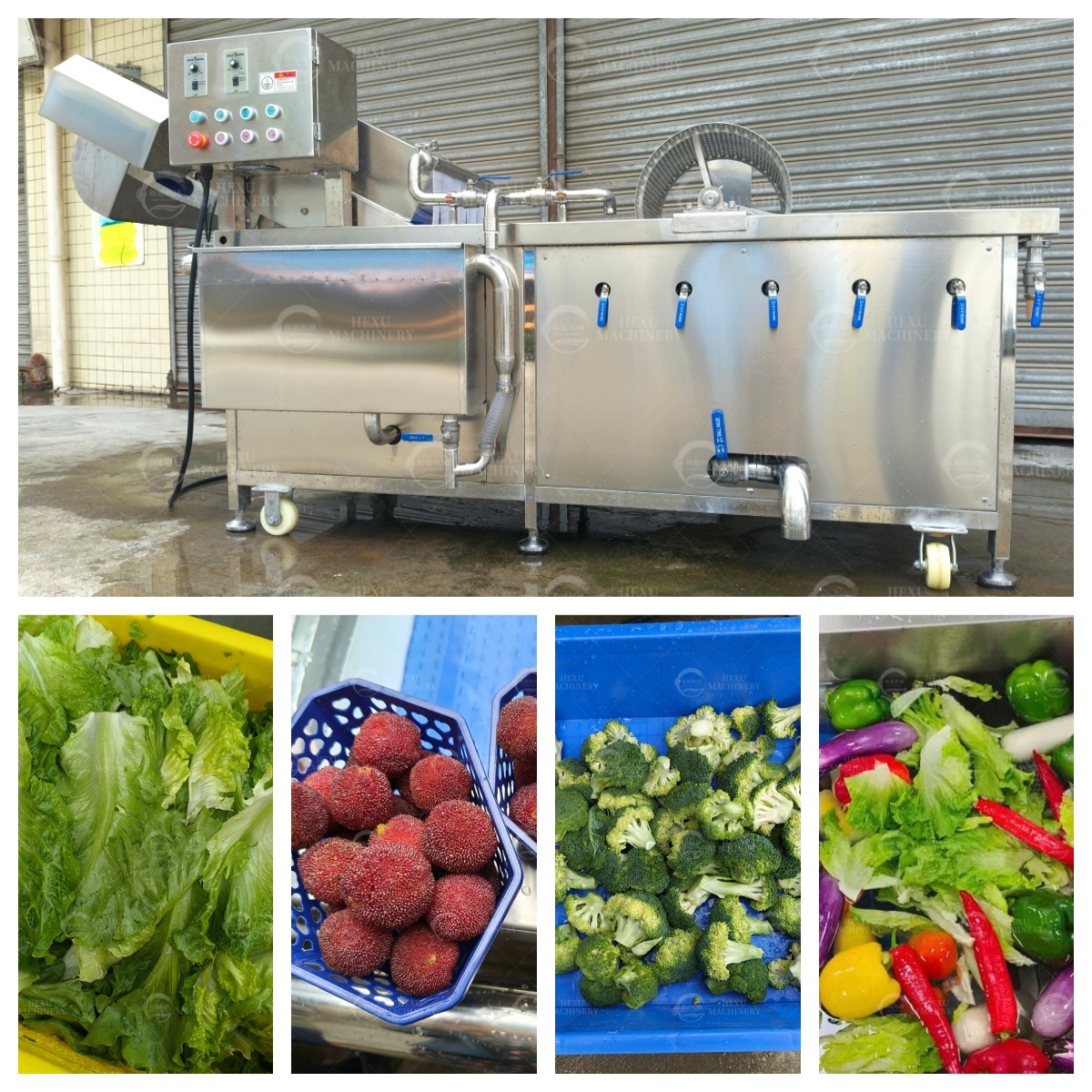
With the increasing food safety standards, the food processing industry has stricter requirements for ingredient cleaning. Ultrasonic vegetable washers, known for their efficiency, environmental benefits, and deep-cleaning capabilities, have been widely adopted in food processing, significantly improving production efficiency and hygiene levels.
I. Applications of Ultrasonic Vegetable Washers in the Food Processing Industry
1. Fruit and Vegetable Cleaning and Processing
In industries such as juice production, frozen vegetables, and pickled foods, ultrasonic vegetable washers effectively remove dirt, pesticide residues, and microorganisms from the surface and crevices of fruits and vegetables, ensuring food safety.
2. Pre-prepared and Ready-to-Cook Vegetable Processing
In the pre-prepared and ready-to-cook vegetable industry, deep cleaning is required before cutting and packaging. Ultrasonic vegetable washers can clean large batches of leafy and root vegetables, reducing manual labor, improving efficiency, and preventing cross-contamination.
3. Seafood and Meat Cleaning
For seafood and meat products such as fish, shrimp, shellfish, and poultry, ultrasonic cleaning removes surface mucus, sand, and bacteria, ensuring higher hygiene standards and reducing the risk of bacterial contamination in food processing.
4. Cleaning of Nuts, Grains, and Herbal Medicines
Ultrasonic vegetable washers are also used to clean nuts, grains, and herbal medicines, effectively removing surface dust, impurities, and pesticide residues to improve ingredient purity.
II. Advantages of Ultrasonic Vegetable Washers in Food Processing
1. High Cleaning Efficiency, Improved Production Output
Ultrasonic cleaning technology rapidly removes contaminants from food surfaces, offering much higher efficiency than traditional handwashing or water flushing methods. It is ideal for large-scale food processing, reducing labor costs and increasing productivity.
2. Deep Cleaning for Enhanced Food Safety
The cavitation effect of ultrasonic waves penetrates deep into the crevices of vegetables, grains, and meat, effectively removing pesticide residues, bacteria, and microorganisms, minimizing potential food safety risks.
3. Water-Saving and Environmentally Friendly, Lower Operating Costs
Compared to traditional water flushing, ultrasonic vegetable washers consume significantly less water and can even recycle some of the water used, reducing waste and aligning with sustainable food processing practices.
4. Reduced Food Damage, Improved Product Quality
Traditional mechanical scrubbing can damage the outer surface of vegetables. Ultrasonic cleaning, being a non-contact process, gently removes dirt while preserving the freshness and integrity of food items.
5. Versatile for Various Food Processing Needs
Ultrasonic vegetable washers are not limited to fruits and vegetables; they can also clean seafood, meat, grains, and other food products, making them highly adaptable to different processing requirements.
6. Minimized Human Intervention, Reduced Cross-Contamination
Traditional cleaning methods require extensive manual labor, increasing the risk of secondary contamination. Ultrasonic washers automate the cleaning process, reducing human contact and improving hygiene standards.
III. Conclusion
Ultrasonic vegetable washers are increasingly used in the food processing industry, offering advantages such as efficient deep cleaning, environmental sustainability, and enhanced food safety. They play a crucial role in fruit and vegetable processing, pre-prepared meal production, seafood handling, and grain cleaning. As automation in food processing continues to advance, ultrasonic vegetable washers are set to become a mainstream solution, providing businesses with a more efficient and safer cleaning method.



